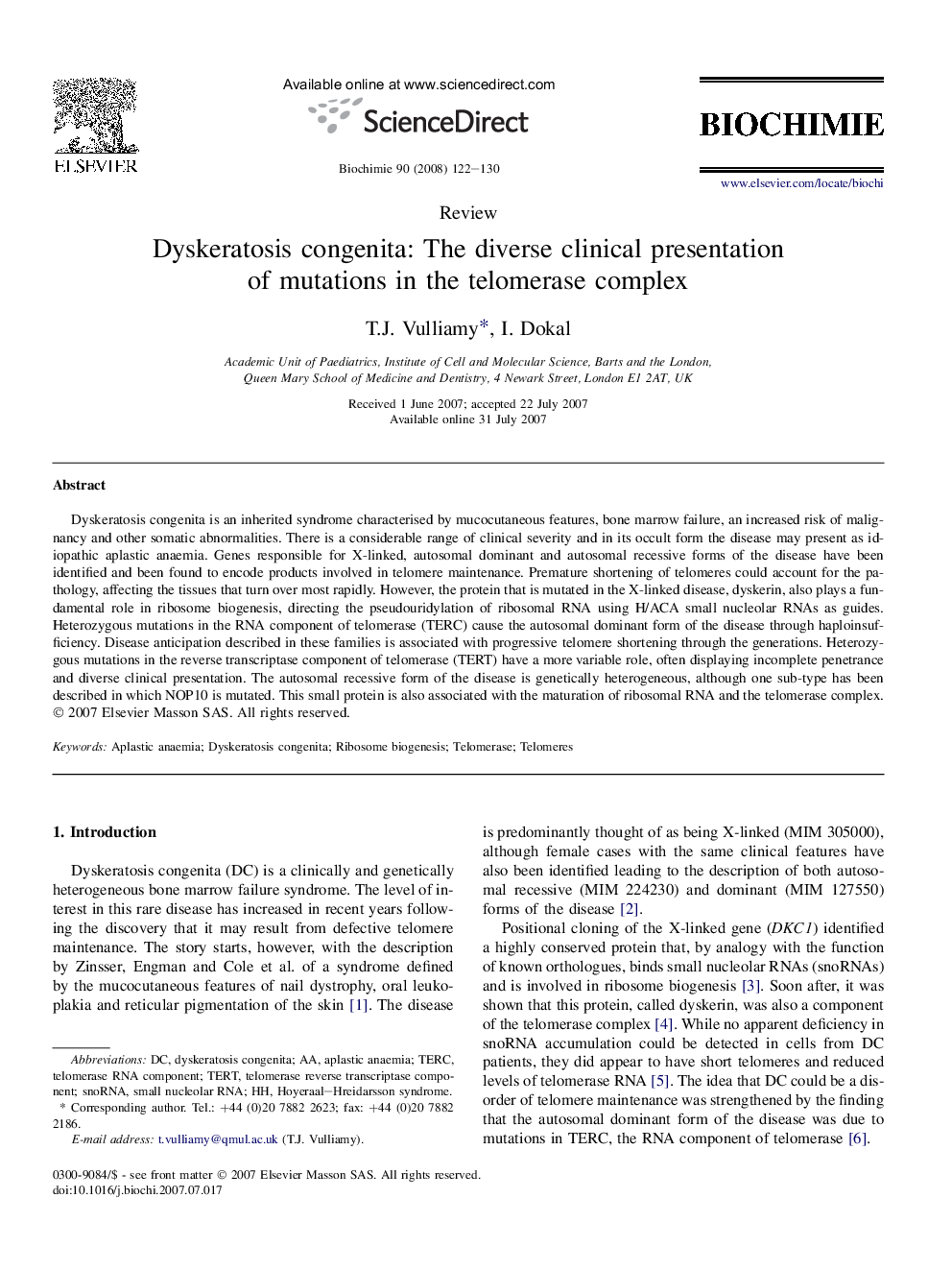| Article ID | Journal | Published Year | Pages | File Type |
|---|---|---|---|---|
| 1952985 | Biochimie | 2008 | 9 Pages |
Dyskeratosis congenita is an inherited syndrome characterised by mucocutaneous features, bone marrow failure, an increased risk of malignancy and other somatic abnormalities. There is a considerable range of clinical severity and in its occult form the disease may present as idiopathic aplastic anaemia. Genes responsible for X-linked, autosomal dominant and autosomal recessive forms of the disease have been identified and been found to encode products involved in telomere maintenance. Premature shortening of telomeres could account for the pathology, affecting the tissues that turn over most rapidly. However, the protein that is mutated in the X-linked disease, dyskerin, also plays a fundamental role in ribosome biogenesis, directing the pseudouridylation of ribosomal RNA using H/ACA small nucleolar RNAs as guides. Heterozygous mutations in the RNA component of telomerase (TERC) cause the autosomal dominant form of the disease through haploinsufficiency. Disease anticipation described in these families is associated with progressive telomere shortening through the generations. Heterozygous mutations in the reverse transcriptase component of telomerase (TERT) have a more variable role, often displaying incomplete penetrance and diverse clinical presentation. The autosomal recessive form of the disease is genetically heterogeneous, although one sub-type has been described in which NOP10 is mutated. This small protein is also associated with the maturation of ribosomal RNA and the telomerase complex.
